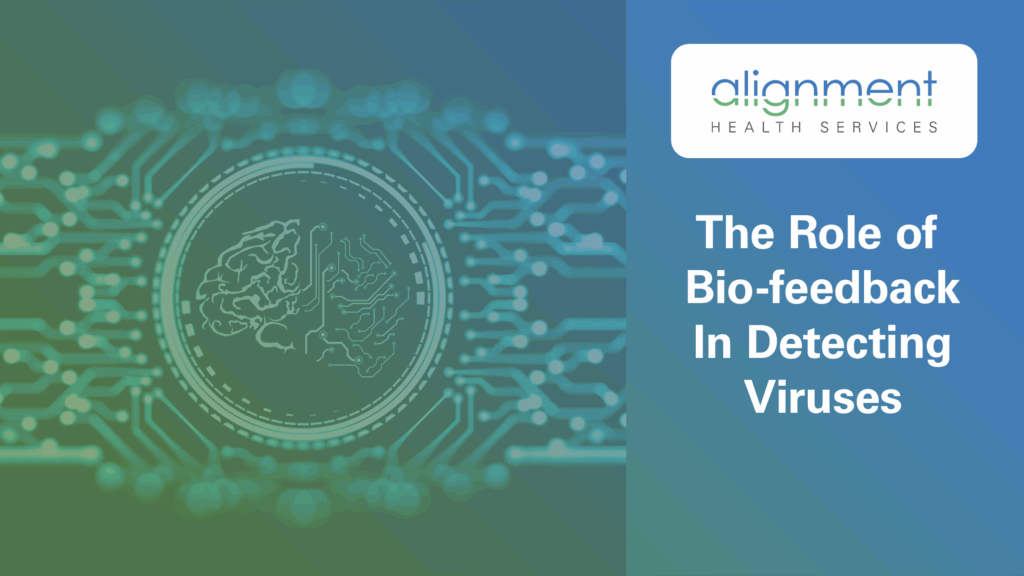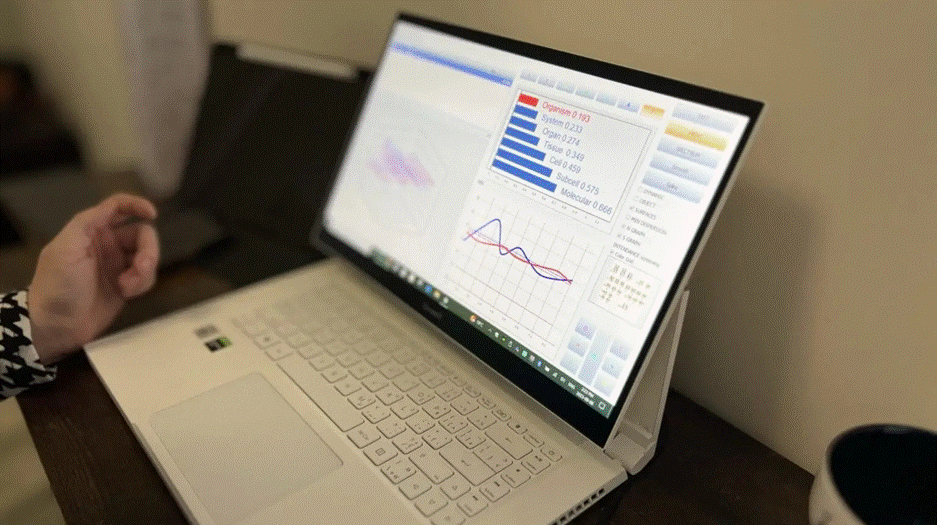How Bio-feedback Can Detect Parasites
Parasites are more common than most people realize, and they
Parasites are more common than most people realize, and they
The global healthcare landscape is witnessing rapid transformation in the
Healthy eating doesn’t have to mean compromising on flavor or

The global healthcare landscape is witnessing rapid transformation in the methods available to detect and monitor viral infections. From routine laboratory diagnostics to sophisticated molecular tests, the ability to identify viruses early is critical in managing both individual health and broader public health concerns. However, traditional testing methods often involve invasive sample collection, significant wait times, laboratory resources, and, in many cases, patient discomfort.
In contrast, bio-feedback scanning represents an emerging approach that is changing the paradigm of virus detection. Offering entirely non-invasive technology, bio-feedback systems can analyze the body’s physiological responses and detect signs of viruses through advanced frequency-based scanning—without the need for blood draws, nasal swabs, or other conventional sampling techniques.
As scientific understanding of human bioenergetics advances, bio-feedback scans are increasingly being recognized for their role in early detection, preventive care, and real-time physiological monitoring. This article explores the science behind bio-feedback scanning, its applications in virus detection, and how this cutting-edge technology is redefining patient experience in clinical diagnostics.
Bio-feedback refers to the process of observing and interpreting the body’s physiological signals in real-time. This advanced system can provide an exact percentage of viral presence in the body and identify which specific system—such as immune, respiratory, or cellular—is being affected.
However, bio-feedback scanning applied to viral detection goes far beyond these classical applications. Instead of focusing on conscious regulation, virus detection bio-feedback technologies analyze the body’s energetic and vibrational patterns on a cellular and molecular level. These patterns reflect the body’s internal biochemical activities and can change in response to external agents such as viral pathogens.
At the core of bio-feedback scanning is the principle of biological resonance. Every substance, including viral particles, has a unique electromagnetic frequency signature. The human body, when under viral stress, exhibits distinct alterations in these frequency signatures due to the interaction between viral particles and the body’s immune and cellular systems.
By introducing harmless frequency signals into the body and capturing the responses, bio-feedback systems can detect even subtle shifts in physiological patterns that may indicate viral activity. This frequency-based interaction provides a wealth of information about the body’s current state without physically penetrating tissues or fluids. While the bio-feedback system can accurately detect viruses and identify affected systems, it is not designed to treat or cure medical conditions.
When a virus enters the body, it hijacks host cells to replicate and spread. This process involves multiple biochemical changes: protein synthesis alteration, enzyme activity modification, and immune system activation. Each of these biological events can cause small but measurable changes in the body’s electromagnetic field.
By analyzing these changes, bio-feedback scans identify deviations from the body’s normal frequency patterns. These deviations serve as indicators of potential viral stress or imbalance within specific organs and systems.
Sophisticated bio-feedback systems are equipped with extensive reference libraries containing known frequency signatures associated with different viral agents. During scanning, the system compares the patient’s measured frequencies against this database to detect any matching or similar patterns that may suggest the presence of viral influence.
It is important to clarify that bio-feedback scanning does not directly identify viral RNA or DNA, as laboratory-based tests do. Instead, it detects how the body’s energetic field responds to internal stressors, including viruses, which may signal a need for further evaluation or clinical investigation.
One of the most remarkable aspects of modern bio-feedback scanning technology is its non-invasive method of data acquisition. Rather than using electrodes, probes, or sample collection devices, the system utilizes specialized over-the-ear headphones. These headphones serve a dual purpose: they emit low-intensity frequency signals into the body and simultaneously capture the body’s frequency responses.
Because no physical penetration or skin contact is required, the procedure is painless, safe, and free of any discomfort. The headphones interface directly with the body’s energetic field, offering a patient-friendly approach suitable for individuals of all ages and medical conditions.

Before the scan, patients are required to follow specific preparation guidelines to ensure accurate results. This includes avoiding the use of electronic devices, refraining from eating or taking medications for at least four hours before the session, and consuming only water during that period. It’s essential to note that individuals with pacemakers are not eligible for the scan. Once properly prepared, the patient sits comfortably while the clinician places the specialized over-the-ear headphones, the only interface used for the scan.
Once activated, the headphones emit a programmed sequence of low-intensity frequencies that interact with the patient’s energy field. The body’s response signals are captured and relayed to the system’s processing unit in real time.
The software utilizes advanced artificial intelligence algorithms to analyze the patient’s unique frequency responses. These are compared against extensive databases of known viral signatures. The system evaluates which frequencies show significant resonance or disruption, indicating potential viral stress.
Upon completing the scan, a detailed report is generated summarizing any identified viruses and associated risk levels. This report is then reviewed by highly trained bio-feedback practitioner who can interpret the results in the context of the patient’s full medical history and recommend appropriate next steps if necessary.
Bio-feedback scanning eliminates the physical invasiveness typically associated with viral diagnostics. Patients are not subjected to blood draws, nasal swabs, or skin pricks. This makes it ideal for everyone, including people who are needle-averse or anxious.
Because data acquisition and processing occur simultaneously, patients and clinicians receive insights immediately, enabling rapid decision-making for follow-up care, immune support, or additional diagnostic testing.
By detecting viruses before the full onset of symptoms, bio-feedback scans offer the possibility of earlier intervention, which can be critical in mitigating viral progression and complications.
Since bio-feedback scanning involves no radiation or invasive techniques, it can be safely repeated as often as needed for monitoring purposes without concern for cumulative risk.
Bio-feedback has also been shown to be an effective tool for supporting the body during the peak of a viral illness by identifying how the body is responding to viruses and guiding care accordingly.
In addition to viral detection, bio-feedback scans can also provide insights into other physiological and energetic imbalances, supporting a broader preventive and wellness-oriented healthcare strategy.
While bio-feedback scanning holds tremendous promise, it is essential to understand its appropriate role within the broader framework of medical diagnostics:
Healthcare providers employing bio-feedback scanning should maintain clear communication with patients regarding the purpose, scope, and interpretation of scan results.
Routine bio-feedback scans can be integrated into preventive care programs to monitor for early signs of viral stress, allowing healthcare providers to initiate supportive therapies before the development of severe illness.
Patients managing chronic viral infections such as Epstein-Barr Virus, Human Herpesviruses, or other persistent viral syndromes may benefit from ongoing bio-feedback scans to track physiological changes and treatment responses over time.
For individuals recovering from viral illnesses, including complex post-viral syndromes, bio-feedback scans offer a non-invasive means of assessing ongoing physiological stress, guiding supportive care decisions as they regain full health.
Organizations may utilize bio-feedback scanning in corporate wellness initiatives or community health programs as a rapid, non-invasive tool to screen large populations for general viral stress, enhancing public health monitoring without the logistical challenges of laboratory testing.
The COVID-19 pandemic revealed the vulnerabilities in traditional diagnostic systems, especially when rapid mass screening was urgently needed. Bio-feedback scanning offers significant advantages for public health preparedness in the context of emerging viral threats:
As healthcare systems worldwide prepare for future pandemics and viral outbreaks, technologies like bio-feedback scanning may become increasingly integrated into comprehensive surveillance and screening protocols.
The non-invasive nature of headphone-based bio-feedback scanning means patients experience zero physical discomfort, making the procedure accessible to virtually everyone, including children, the elderly, and medically sensitive individuals. The only exception is individuals with pacemakers, who cannot be scanned due to the frequency-based nature of the technology.
The speed of real-time scanning and data processing delivers results during the same visit, minimizing patient anxiety and eliminating waiting periods often associated with lab-based diagnostics.
Patients receive not only viral stress indicators but also broader insights into their body’s overall energetic and functional status. These insights can support more holistic health discussions between patients and providers.
Modern bio-feedback systems are designed with stringent data privacy protocols, ensuring secure handling of patient information in compliance with healthcare privacy standards.
The ongoing evolution of bio-feedback technology holds immense potential for future healthcare applications. As research advances, several developments are likely to further enhance its utility:
With these advancements, bio-feedback scanning stands to become an indispensable tool in the future of individualized care, preventive medicine, and global infectious disease management.
At the forefront of this technological revolution, our expert practitioner at Alignment Health Services offers state-of-the-art bio-feedback scanning solutions that embody the full promise of non-invasive viral detection.
Using a unique system that operates solely with specialized over-the-ear headphones, we have eliminated the discomfort and inconvenience associated with conventional diagnostics. There are no probes, invasive sensors, wires, sticky pads, or painful procedures—just a simple, relaxing session that delivers comprehensive insights into the body’s current state.
By combining advanced frequency scanning technology with expert clinical interpretation, Alignment Health Services provides patients with actionable information about their health while prioritizing comfort, safety, and precision. Our commitment to innovation and patient-centered care continues to position us as a leader in the field of modern bio-feedback diagnostics. And all right here in Cochrane!
As healthcare continues to evolve, we remain dedicated to delivering the most advanced, non-invasive solutions that empower both patients and clinicians in the pursuit of optimal health.
At Alignment Health Services, our state-of-the-art bio‑feedback scan is designed to help you understand your body at the molecular level with utmost comfort. Whether you’re proactively managing your wellness or seeking early insights into potential viral threats, our comprehensive scan delivers clear, actionable data. Take control of your health today by scheduling a session with our experienced team and step into the future of advanced, non-invasive diagnostics.